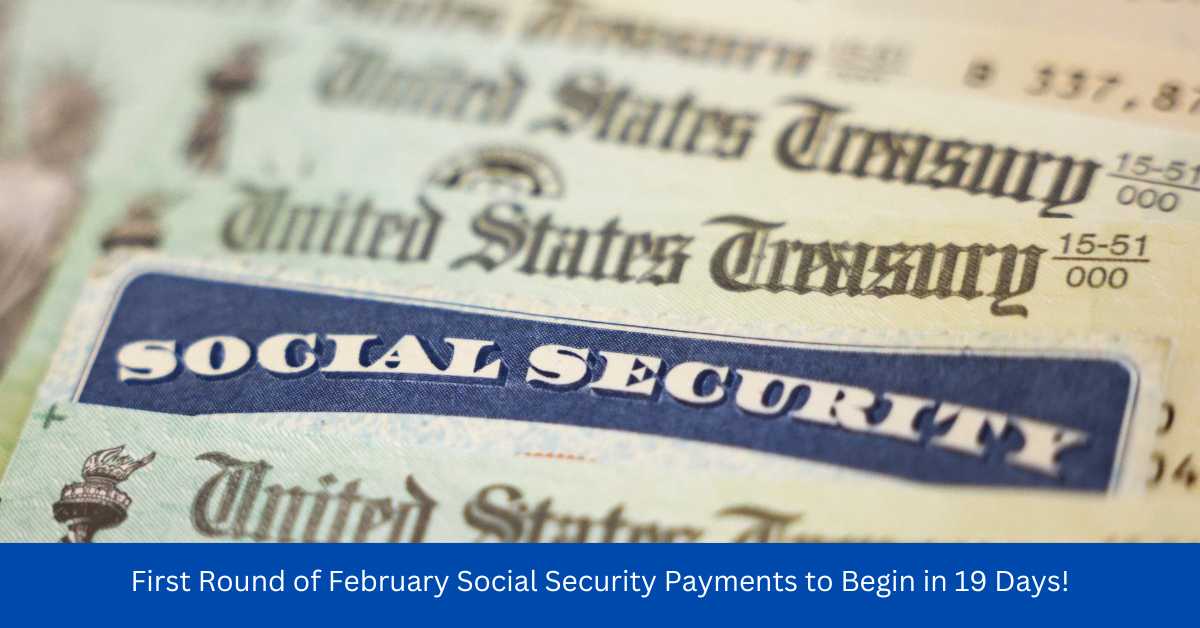The first round of February’s Social Security payments will be distributed in 19 days, marking the start of a process that takes place in three separate rounds. The highest earners who retire at age 70 can receive up to $5,108 per month, making this an important moment for many retirees.
Social Security payments are typically sent out beginning on the second Wednesday of each month, with the following rounds going out in the subsequent weeks. The exact timing of when each retiree will receive their payment depends on the date of birth.
For instance, retirees born between the 1st and 10th of the month will receive their Social Security payments on February 12th. Those born between the 11th and 20th of the month will receive theirs on February 19th, and for retirees born on or after the 21st, the payment will arrive on February 26th.
The amount of money a retiree receives through Social Security can vary depending on several factors, including the age at which they decide to retire, how much they’ve paid into the system, and the number of years they’ve been paying into Social Security. For example, someone who retires at the youngest age, 62, could receive up to $2,831 each month.
On the other hand, if someone delays their retirement until they reach age 70, they could potentially get up to $5,108 each month. The amount you can expect to receive can be estimated using the Social Security Administration’s (SSA) online calculator, which offers personalized estimates based on your work history and projected retirement age.
To qualify for Social Security payments, individuals need to be at least 62 years old. While this is the minimum age to begin receiving benefits, it’s important to note that the amount you’ll receive each month will increase the longer you wait to retire.
Retiring early means smaller payments, whereas delaying your retirement leads to higher monthly payments. These payments are part of the benefits provided by the SSA and are crucial for retirees who rely on these funds as their primary source of income after they stop working.
Social Security is primarily funded through a payroll tax paid by both employers and employees. The funds that workers contribute go directly into the Social Security trust fund, which is used to pay benefits to those who are eligible. However, there are growing concerns about the long-term sustainability of the Social Security system.
With an aging population and a shrinking workforce contributing to the program, there are warnings that the SSA may not be able to fully fund all future payments. According to analysts, the program could run out of money by 2034 unless Congress takes action to address the issue. As more baby boomers retire and fewer workers are available to contribute, it becomes a growing concern for future generations who are planning to rely on these benefits.
There are several ways retirees can make the most out of their Social Security payments. The amount you receive is directly tied to how much you’ve paid into the system over the years, so the more you have contributed, the higher your benefits will be.
In addition, the age at which you choose to start receiving payments plays a major role. Retiring at 62 is the earliest possible age, but you’ll receive a reduced monthly amount. By waiting until you reach 70, you can get the maximum possible benefit. The SSA encourages workers to plan their retirement carefully to make sure they’re getting the most out of their benefits.
For those who are still working, it’s important to remember that the Social Security system is built to help those who have contributed to it over the years. In addition to the payroll tax, workers also pay a portion of their income to support the program.
This means that if you are still working, you will continue to contribute to Social Security, and your future benefits could increase. If you plan to work for a longer period of time, you might be able to boost your future payments by increasing your lifetime earnings.
While many people rely on Social Security as a primary income source during retirement, it’s important to consider other savings and retirement accounts as well. Experts recommend that individuals save for retirement outside of Social Security, since the program alone might not be enough to maintain your standard of living in retirement. Having a mix of retirement savings, investments, and Social Security can provide a more secure financial future.
As of now, Social Security is an important safety net for millions of retirees, providing a steady source of income after years of work. However, with the possibility of reduced payments in the future, it’s crucial to stay informed and plan for retirement in a way that includes multiple sources of income.
If you’re nearing retirement, now is the time to start thinking about how much you’ll need, how long you’ll need it, and how Social Security fits into your retirement plan. It’s always a good idea to talk to a financial planner to make sure you’re on track to meet your goals.
Disclaimer: This article has been meticulously fact-checked by our team to ensure accuracy and uphold transparency. We strive to deliver trustworthy and dependable content to our readers

